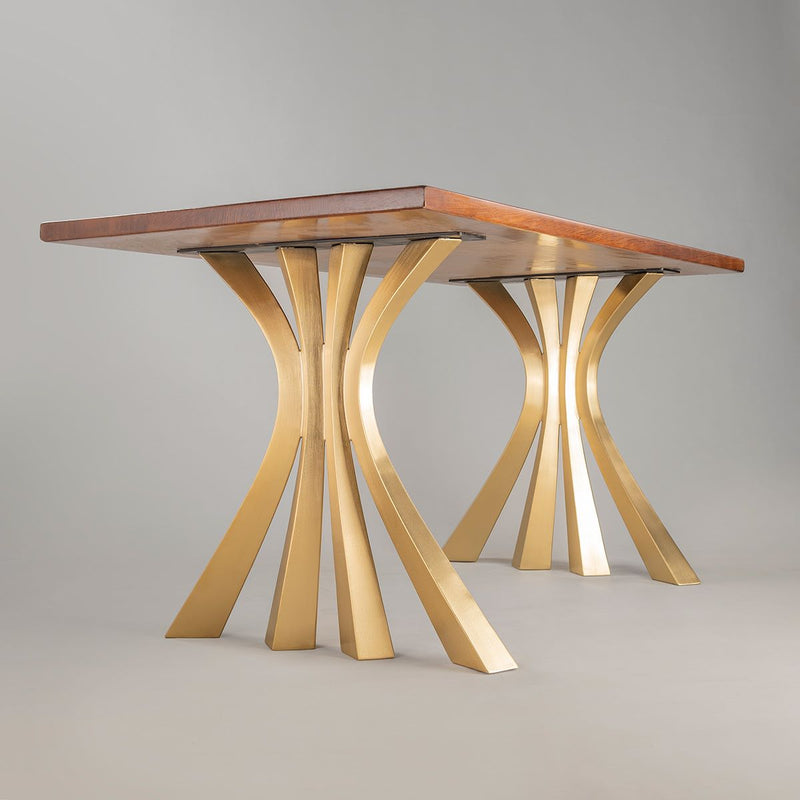Discover the Best Products for Dining Room Table Legs for Every Design
Discover the Best Products for Dining Room Table Legs for Every Design
Blog Article
A Comprehensive Consider Dining Table Leg Styles: Finding the Ideal Match
Picking the right table leg design is critical for both visual charm and sensible functionality. Typical 4 legs supply timeless beauty and security, while the pedestal base provides enhanced legroom and a contemporary appearance. For those with bigger tables, trestle legs make certain durable support, whereas barrette legs introduce a mid-century modern vibe with their minimalist layout. The x-shaped legs mix modern style with boosted stability. Each of these alternatives brings unique advantages, making the option greater than just an issue of choice. Explore even more to uncover which style flawlessly matches your eating room and way of living.
Conventional 4 Legs
Amongst the numerous sorts of table leg designs, the conventional four-leg style continues to be an ageless option for many homes. This classic setup uses a harmonious mix of performance and aesthetics, making it a seasonal favorite. Four legs give well balanced support, ensuring the table stays steady and efficient in bearing substantial weight. This is specifically useful for families that regularly hold huge celebrations or utilize their eating table for numerous purposes, such as work or crafting.
From a visual perspective, the conventional four-leg layout can be conveniently adapted to various indoor styles. Whether crafted from wood, steel, or a combination of products, these legs can be elaborately sculpted, sleek and minimalistic, or anything in between. Their adaptability allows them to enhance both rustic and contemporary settings perfectly.
In addition, the uncomplicated structure of the four-leg design assists in convenience of movement and placement within a room. Unlike more complicated bases, this style minimizes obstructions, supplying adequate legroom for restaurants. In recap, the traditional four-leg dining table leg style marries enduring sophistication with sensible functionality, making it a sharp choice for those looking for both type and function in their dining furnishings.
Stand Base
Often commemorated for its elegant and space-efficient layout, the stand base is a prominent option to the conventional four-leg arrangement in table leg designs. This distinct base generally includes a single main column supporting the tabletop, which can vary in type, from ornately sculpted wood to sleek, modern steel. One of the primary advantages of the stand base is its capacity to take full advantage of legroom and seating flexibility. Without corner legs, diners are paid for higher liberty of activity, making it an ideal selection for round and oval tables that advertise more intimate and comprehensive gatherings.
The central column itself supplies a canvas for detailed styles and creative expressions, adding a component of aesthetic passion below the table. In summary, the stand base combines functionality with style, making it a fine-tuned and practical alternative for varied dining atmospheres.
Trestle Legs
Trestle legs give a durable and classic foundation for dining tables, defined by their straight cross-bracing and tough assistance light beams. Stemming from middle ages times, this design has actually advanced yet retained its vital structure, making it navigate here a perennial fave in both standard and modern settings. The main trestle light beam, typically sustained by two or more vertical posts, supplies phenomenal stability, enabling larger table lengths without the requirement for added legs.
A significant look at here now advantage of trestle leg tables is the ample legroom they use. Unlike tables with four corner legs, the absence of obstructions at the table's edges supplies unobstructed room for chairs and diners, boosting comfort and accessibility. This makes trestle tables optimal for suiting larger gatherings, whether in an eating space or a banquet hall.
The visual flexibility of trestle legs is significant. Offered in a selection of products such as timber, steel, and composite, they can be finished to complement a wide variety of indoor styles. From rustic farmhouse to sleek contemporary layouts, trestle legs can be customized to suit specific tastes. Their long-lasting appeal and functional benefits make trestle legs a compelling choice for those looking for both design and usefulness in their eating table.
Barrette Legs

The charm of barrette legs depends on their simplicity and convenience - dining room table legs. Readily available in a variety of materials, including steel and brass, they can be ended up in various colors to enhance different indoor styles. Whether coupled with a rustic wood table top or a contemporary glass surface area, hairpin legs effortlessly blend functionality with a touch of classic charm
Sturdiness is another remarkable attribute of hairpin legs. In spite of their fragile look, these legs are engineered to birth substantial weight, ensuring the table remains stable and safe and secure. Additionally, they are relatively easy to install, making them a prominent option for do it yourself fanatics and professional furnishings manufacturers alike.
X-Shaped Legs

Created from products such as steel, timber, or a combination of both, X-shaped legs can be customized to match different style preferences. Steel legs typically offer a smooth and industrial feeling, perfect for loft-style homes and contemporary eating spaces. On the various other hand, wooden X-shaped legs offer a warmer, extra rustic appeal, appropriate for farmhouse or eclectic interiors. The versatility in materials enables property owners to personalize their table to much better fit their total layout scheme.
Furthermore, the design behind X-shaped legs ensures even weight circulation, minimizing the danger of wobbling and improving sturdiness. This makes them particularly appropriate for larger dining tables that require extra assistance. Basically, X-shaped legs mix practical engineering with contemporary appearances, making them an ageless selection for diverse dining environments.
Final Thought
A thorough understanding of eating table leg designs exposes the unique qualities and advantages of each layout. Trestle legs make certain robust support for larger tables, and hairpin legs introduce a mid-century modern aesthetic.
Report this page